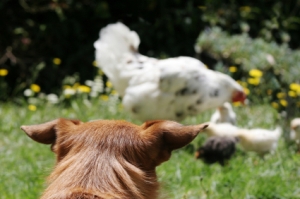2014 LEGISLATIVE UPDATE
Virginia’s 2014 Legislative Session ended up being quite dynamic, with a number of legislative victories. These changes will go into effect tomorrow – July 1, 2014.
Legislative Victories
SB 228 (Bailey’s Law): This law requires pet stores to post information about the source of their dogs, including the breeders’ name, city, state and USDA license number. Additionally, SB 228 gives consumers a new remedy – for veterinary bills to care for a sick dog or cat purchased at a pet store, instead of being forced to return the animal to the pet store, or to absorb those costs if the purchaser kept the animal.
SB 42 (Fox Penning): This long-anticipated law phases out existing fox pens and prohibit new pens from opening.
HB 972 (Protective Orders): HB 972 authorizes courts to grant possession of a companion animal to protective order petitioners.
SB 177 (Service Animals): This law expands the definition of “service dog” to be more in line with the federal definition, by including dogs trained to assist those with physical, sensory, intellectual, developmental, or mental disability, or mental illness.
SB 432/HB 54 and HB 740 (Dogs and Fowl/Livestock): These bills addressed dogs who injure or kill livestock and fowl. Now, animal control officers will have the option of seizing the dog, instead of having no choice but to kill the dog. As a compromise, the bills bumped the cap for compensation to farmers from $400 to $750 per animal for livestock (but did not change the $10 compensation figure for fowl).
SB 444 (Hybrids): SB 444 authorizes localities to prohibit residents from keeping dog-wolf hybrids by ordinance. Current law only authorizes a permitting system. This bill also changed the definition of “hybrid” slightly.
HB 588 (Cemetery grounds): HB 588 allows cemeteries to devote a section of cemetery grounds to interment of human and pet remains.
HB 1067 (Definitions): This bill amended some of the definitions in Virginia Code Section 3.2-6500, which will impact all releasing agencies in the Commonwealth. “Pounds” will no be called “public animal shelters,” and shelters will now be distinguished as either “public animal shelters” or “private animal shelters.” The definition of “public animal shelter” has been simplified to “a facility operated by the Commonwealth, or any locality, for the purpose of impounding or sheltering seized, stray, homeless, abandoned, or surrendered animals or a facility operated for the same purpose under a contract with any locality.” The definition for “private animal shelters” has not been changed.
The definitions of “home-based rescue” and “foster care provider” were also updated. A “home-based rescue” is now defined as “an incorporated, nonprofit animal welfare organization that takes custody of companion animals for the purpose of facilitating adoption and houses such companion animals in a foster home or a system of foster homes.” This definition removes the requirement that the rescue accept more than 12 animals or three unweaned litters to qualify as a rescue. The definition of “foster care provider” has also been amended to apply to “persons” rather than individuals, to clarify that a veterinary practice or pet supply store that houses foster animals will also qualify as a “foster care provider.”
Bills that didn’t make it out of this Session
A number of bills did not make it out of session, including:
HB 212 (Motor Vehicles): This bill would have made it unlawful to drive while holding a companion animal. It was left In the House Transportation Committee.
HB 1188 (Animal Fighting): This bill would have amended Virginia’s animal fighting statute (Virginia Code Section 3.2-6571) to prohibit charging admission or wagering money at a fight, and would also have prohibited putting a dog in a pen with a coyote or fox. The bill was left in the House Court of Justice Committee.
SB 32 (Animal Abuser Registry): SB 32 would have required the Virginia State Police to create and maintain an animal abuser registry. This bill was continued to 2015 in the Finance Committee.
SB 622 (Spay/Neuter Fund): This bill would have established a state Spay/Neuter Fund, with a $50/ton surcharge on pet food distributed in Virginia. It was continued to the 2015 Senate Agriculture, Conservation and Natural Resources Committee.














